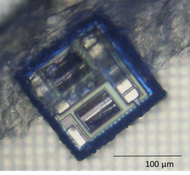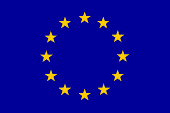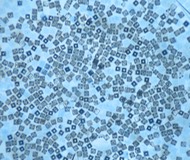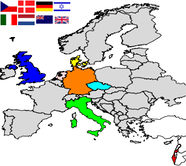Using a project developed Chemical Swarm Language, based on a reaction-diffusion system and moveable objects (lablets), we have been able to explore encoding, engineering requirements and chemical conditions necessary for lablets to generate collective and integrated information processing and material production processes. We have in particular explored self-replicating higher order lablet and chemical structures. One encoding mechanism we have identified that allows the lablet swarm (and non-equilibrium chemical) structures replicate, is based on allowing lablets to be in two different states where they produce two different kinds of chemicals, which each repel lablets being in the other state. Because the two different lablet populations produce different chemicals, these two populations tend to cluster with themselves producing stronger chemicals concentration clusters around themselves, and if these clusters are big enough they will separate (replicate). Replication of more sophisticated clusters is also possible, e.g. clusters of spheres each composed of “rings” of high “interfacial” concentrations and low “internal” concentrations, see Fig. 10.2 and for details D10.3. Shortly after the first daughter cell has separated already the next replication is in preparation and starts separating off, see Fig 10.2. Successive replication continues to occurs as long as enough material is available. To maintain the cluster size new lablets need to be added as a resource for the continued replication process.
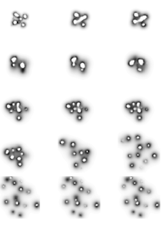
Figure 10.2: Self-replication of non-equilibrium higher-order chemical structures (spheres) generated by swarming lablets. Dynamic patterns are shown at times 1000 through 58350. For details see D10.3.

